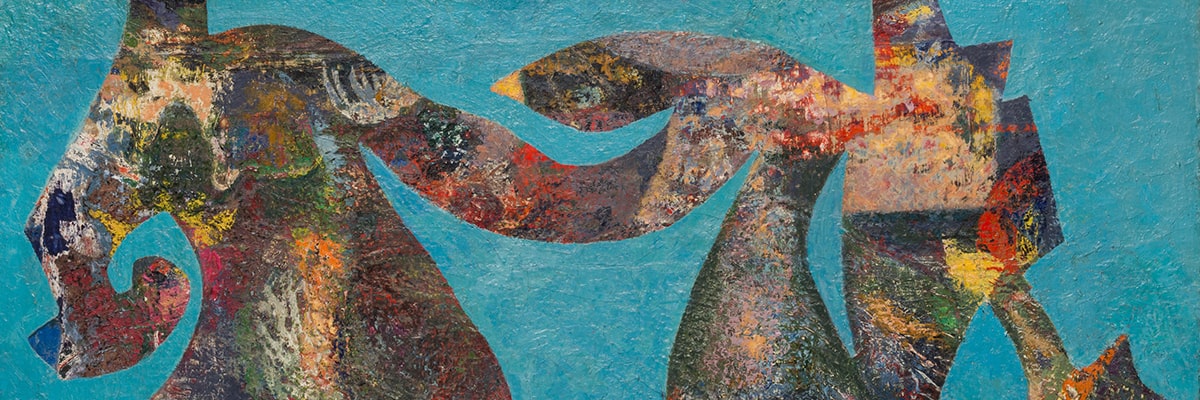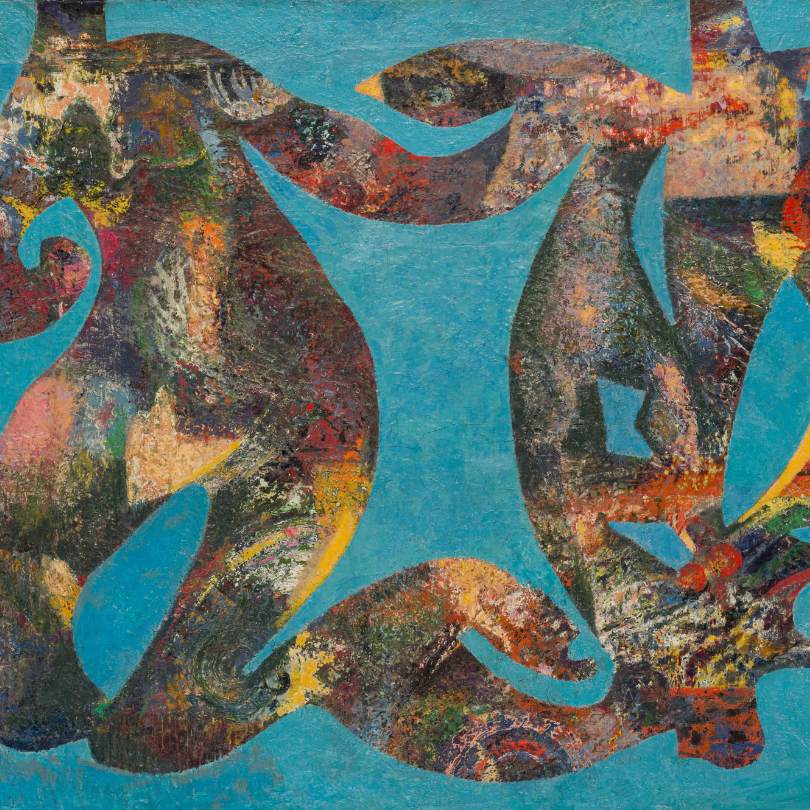

This exceptional department casts a brilliant spotlight on the evolution of Modern British & Irish Art, tracing its trajectory from the late 19th century through to the cutting edge of the 21st century. Featuring an exquisite array of paintings, works on paper, and sculpture.
The journey begins with the tonal refinement of William Nicholson and the psychological realism of Walter Sickert, a founding figure of the Camden Town Group. This era also saw the quiet introspection of Gwen John and the expressive bohemian flair of her brother Augustus John, whose works reflect the changing mood of early modern Britain. The vibrant post-impressionism of the Bloomsbury Group—with Vanessa Bell, Duncan Grant, and Roger Fry—introduced bold colour and continental influence to British shores, laying vital foundations for future experimentation.
The angular dynamism of Vorticism soon followed, with artists such as David Bomberg, Edward Wadsworth, William Roberts, and Christopher Nevinson capturing the energy and disruption of the modern age. The First World War gave rise to a generation of war artists—Paul Nash, John Nash, Stanley Spencer, and William Orpen—whose emotionally resonant works remain some of the most profound reflections on conflict in British art.
Across this period, distinctive voices flourished: L.S. Lowry, with his unique industrial scenes and stylised figures, offered an iconic view of the working-class North; Cedric Morris blended portraiture and horticulture with a vivid palette; and Eric Ravilious developed a uniquely English vision in watercolour, bridging pastoral beauty and modern design.
As the century progressed, groups such as The London Group and Unit One fostered innovation, championing talents like Ben Nicholson, Barbara Hepworth, and Henry Moore—sculptors and painters who pushed the boundaries of form and abstraction. Constructivism and Pop Art emerged with figures such as Victor Pasmore, Eduardo Paolozzi, and Richard Hamilton, whose works embraced the machine age and mass culture with critical insight and invention.
The Neo-Romantics, including Graham Sutherland, John Piper, and Ceri Richards, responded to landscape and mythology with atmospheric depth. Meanwhile, the Cornish town of St Ives became a vital centre of post-war creativity: early modernists Alfred Wallis and Christopher Wood inspired a new generation, including Peter Lanyon, Terry Frost, Bryan Wynter, Roger Hilton, and William Scott, who fused abstraction with the rugged spirit of the coast.
Simultaneously, the School of London and associated painters reaffirmed the human figure and psychological intensity as central to post-war British art. Artists like Lucian Freud, Frank Auerbach, Leon Kossoff, Euan Uglow, and William Coldstream brought raw intimacy and technical rigour to their depictions of the human form. Craigie Aitchison explored stillness and symbolism through vibrant colour, while Elisabeth Frink brought emotional power and vulnerability to the language of sculpture.
A separate but equally compelling narrative unfolded in Ireland. Jack Butler Yeats, a towering figure in Irish art, captured the poetic spirit of his nation with expressive brushwork and deep emotional resonance. Paul Henry rendered the Irish landscape with quiet beauty and national pride, while Sir John Lavery offered a cosmopolitan vision through society portraiture and scenes of state. Mid-century artists such as Colin Middleton and Daniel O’Neill brought a deeply personal, often dreamlike sensibility to their works, blending elements of surrealism and introspective narrative.
Women artists such as Eileen Agar and Ithell Colquhoun brought Surrealism into the British context, imbuing their work with symbolism, myth, and the unconscious. Meanwhile, in Scotland, the bold colours and modern compositions of the Scottish Colourists—John Duncan Fergusson, Francis Cadell, and Samuel John Peploe—reflected a powerful synthesis of French post-impressionist influence and national character.
From the poetic abstraction of Howard Hodgkin to the iconic portraiture of David Hockney, the irreverence of Peter Blake and Allen Jones, to the uncompromising vision of Francis Bacon, Modern British & Irish Art remains as diverse as it is influential. Contemporary artists such as Tracey Emin, Grayson Perry, Jenny Saville, Chris Ofili, and Antony Gormley continue to shape this vibrant narrative, infusing it with personal, political, and conceptual significance.
Thinking of selling your works of art? Contact our specialists for a valuation and professional advice on the art market, or submit an Online Valuation.

Modern British & Irish Art
Hear about top stories, news, auctions and events from the Modern British & Irish Art Department